Your cart is currently empty!
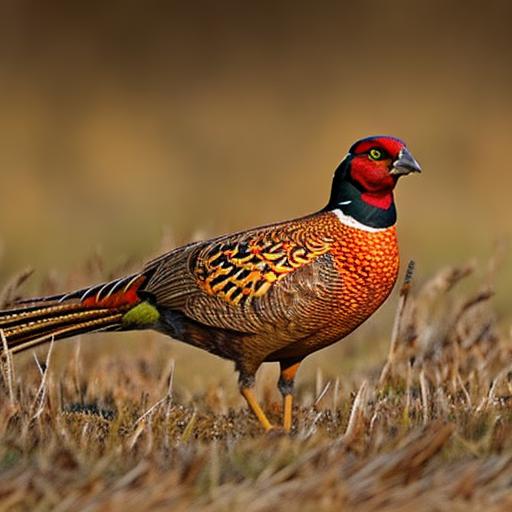
Ultimate Guide Series: How to Hunt Pheasant Like a Pro

Table of Contents
Introduction
Ah, the thrill of pheasant hunting! There’s nothing quite like the rush of seeing those colorful birds take flight, especially when you’ve positioned yourself just right. If you’ve clicked on this guide, chances are you’re looking to dive into the world of pheasant hunting or perhaps refine your existing skills. Welcome aboard! Pheasant hunting is a tradition that’s been passed down through generations, and it’s a sport that offers both challenge and reward in equal measure. Whether you’re a seasoned hunter or just starting out, understanding “how to hunt pheasant” is a blend of art, science, and a touch of luck. In this guide, I’ll be sharing insights from my years of chasing these elusive birds across various terrains. From understanding their behavior to choosing the right gear and techniques, we’ll cover it all. So, grab your favorite hunting cap, and let’s dive into the world of pheasant hunting together.
Understanding Pheasant Behavior
Ah, the elusive pheasant! To truly master the art of hunting these vibrant birds, one must first understand their behavior. It’s a bit like trying to predict the moves of a chess opponent; once you get into their head, you’re several steps ahead.
Daily Routines: Feed, Rest, and Roost
Pheasants, like most creatures, are creatures of habit. Their daily routines revolve around three primary activities: feeding, resting, and roosting. In the early morning, just after dawn, pheasants venture out to feed. They’re primarily ground feeders, so look for them in fields with plenty of seeds and grains. By mid-morning, especially if it’s a sunny day, they’ll seek shelter and rest in taller grasses or underbrush, making this an ideal time to stalk them.
As evening approaches, pheasants begin their search for a roosting spot. They prefer places that offer some protection from predators, like thickets or hedgerows. If you’re out hunting during this time, keep an ear out for the rustling of leaves or the soft calls they make as they settle down for the night.
Recognizing Signs and Predicting Movement
Now, if you’re thinking, “That’s all well and good, but how do I find these spots?”, you’re in luck. Pheasants, while sneaky, do leave behind clues. One of the most obvious signs is their tracks. Pheasant tracks are distinctive, with three forward-pointing toes. If you come across a trail of these in soft mud or snow, there’s a good chance a pheasant isn’t far off.
Another sign to watch for is their droppings. Pheasant droppings are elongated and can give you an idea of how recently a bird was in the area. Fresh droppings might mean the bird is nearby, while older, dried droppings indicate it’s been a while since they passed through.
Feather trails can also be a goldmine of information. A cluster of feathers might indicate a spot where pheasants regularly dust-bathe or a location where a predator had a recent meal. Either way, it’s a sign that pheasants frequent the area.

In the end, understanding pheasant behavior is a mix of observation, knowledge, and a bit of intuition. The more time you spend in their habitat, the better you’ll become at reading these signs and predicting their next move. And that, my fellow hunter, is half the battle won.
Essential Gear for Pheasant Hunting
When it comes to pheasant hunting, gear can make all the difference. Just as a carpenter wouldn’t go to work without his trusty hammer, a pheasant hunter shouldn’t step into the field without the right equipment. Let’s dive into the essentials that can make your hunting trip both successful and comfortable.
Choosing the Right Firearm and Ammunition
First and foremost, let’s talk firepower. The choice of firearm is crucial. For pheasants, most hunters prefer a 12 or 20-gauge shotgun. These provide a good balance of power and spread, ensuring that when that bird takes flight, you have a solid chance of bringing it down.

When it comes to ammunition, it’s all about the shot size. For pheasants, #4, #5, or #6 lead shot is typically recommended. These sizes provide enough power to ensure a humane kill without causing excessive damage to the bird. Remember, the goal is to enjoy the hunt and have a tasty meal afterward, not obliterate our feathered friend.
Gear Up: Clothing, Boots, and More
Now, onto the attire. Pheasant hunting can be a waiting game, and depending on where you are, it can get chilly. Layering is your best friend. Start with a moisture-wicking base layer to keep sweat at bay. Add an insulating layer like fleece or wool for warmth, and top it off with a waterproof and windproof outer layer. This system allows you to add or shed layers as the day progresses and temperatures fluctuate.
Your feet, arguably the most crucial part of the hunt, need special attention. Invest in a good pair of waterproof hunting boots. Whether you’re trudging through wet fields or crossing streams, keeping your feet dry is paramount. Look for boots with good ankle support, as terrains can be uneven and tricky.
Lastly, don’t forget about your hands and head. A good pair of gloves will keep your fingers nimble and ready to pull the trigger, while a hat or cap will shield your eyes from the sun and keep your head warm.
For those extra bits and bobs, consider a hunting vest with ample pocket space. This allows you to carry essentials like extra ammunition, snacks, and maybe a flask of your favorite warm beverage. And, of course, always have a blaze orange element to your attire. Safety first!
Scouting and Choosing the Perfect Location
Ah, location, location, location! It’s not just a mantra for real estate agents; it’s the heart and soul of a successful pheasant hunt. You could be the sharpest shooter in the county, but if you’re not in the right spot, those pheasants will remain but a distant dream. Let’s delve into the art of scouting and how to recognize those prime pheasant paradises.
Scouting Potential Hunting Grounds
Scouting is a bit like detective work. You’re piecing together clues to predict where your quarry will be. Start by visiting potential hunting areas during the off-season. This gives you a feel for the lay of the land without the pressure of the hunt.
Use tools like topographic maps or apps to identify potential hotspots. Look for natural funnels where pheasants might travel, such as between feeding and roosting areas. Talk to local farmers or landowners. Often, they’ll have firsthand knowledge of where pheasants congregate on their property. And don’t forget about the power of observation. Spend some time quietly watching and listening. Pheasants are vocal birds, and their calls can give away their favorite hangouts.
Prime Pheasant Habitats: The Trifecta of Fields, Water, and Shelter
Pheasants have three primary needs: food, water, and shelter. If you find a location that offers all three, you’re onto a winner.
Fields:
Pheasants love grain fields. Corn, sorghum, and wheat fields are like five-star restaurants to them. These fields offer a smorgasbord of seeds, which are a pheasant’s primary food source. But don’t just focus on the middle of the field. The edges, where the field meets natural cover, are often where pheasants will feed, especially in the early morning or late afternoon.

Water Sources:
Like all creatures, pheasants need water. Streams, ponds, or even low spots in a field that collect water can be magnets for these birds. If you find a field with a water source nearby, you’ve hit the jackpot.
Sheltered Areas:
Pheasants are prey animals, and they’re always on the lookout for predators. They need places to hide. Thickets, hedgerows, and tall grasses offer shelter from both predators and the elements. These areas are also where pheasants will roost at night, so they’re prime spots for early morning hunts.
In essence, the perfect pheasant hunting location is a blend of food, water, and shelter. Find a spot that offers all three, and you’re well on your way to a successful hunt. So, put on your detective hat, do your scouting, and may your hunting grounds be ever fruitful!
The Role of Hunting Dogs
There’s a saying among hunters: “A good dog can make an average hunter great, and a great hunter exceptional.” When it comes to pheasant hunting, this couldn’t be truer. Our four-legged companions bring a blend of skill, enthusiasm, and sheer joy to the hunt that’s hard to match. Let’s dive into the world of hunting dogs and discover how they can elevate your pheasant hunting experience.
Advantages of Hunting with a Trained Dog
Imagine you’re in a vast field, and somewhere in that expanse is a well-camouflaged pheasant. Finding it on your own? Needle in a haystack. But with a trained dog? The odds shift dramatically in your favor.
Firstly, dogs have an incredible sense of smell. They can detect a pheasant’s scent from a distance, leading you directly to the bird’s location. This not only increases your chances of finding pheasants but also saves you a lot of time and energy.
Secondly, a well-trained dog can “flush” the bird, driving it out of its hiding spot and into the air, giving you a clear shot. And once the bird is down, a dog can retrieve it, ensuring that no game is wasted.
Lastly, there’s the sheer joy of companionship. Hunting can be a solitary activity, but with a dog by your side, you have a loyal partner sharing in the thrill of the chase.
Choosing the Right Breed and Basic Training Tips
Not all dogs are created equal, at least when it comes to pheasant hunting. Some breeds are naturals. Pointers, like the English Setter or German Shorthaired Pointer, have an innate ability to locate and indicate the presence of game. Retrievers, like the Labrador or Golden Retriever, excel at fetching downed birds. And then there are versatile breeds like the Vizsla or the Brittany, which can both point and retrieve.

Once you’ve chosen a breed, training is paramount. Start young, if possible. Basic obedience is a must. Your dog should come when called, stay when told, and be comfortable with the sound of gunfire.
Next, introduce them to the scent of pheasants. This can be done using pheasant wings or scent products. Reward them for showing interest in the scent. Over time, you can set up more complex scenarios, hiding the scented object and encouraging them to search.
Lastly, remember that patience and consistency are key. Training a hunting dog is a journey, not a destination. Celebrate the small victories, and before you know it, you’ll have a reliable hunting partner ready to hit the fields with you.
Techniques for Flushing and Shooting
There’s a rhythm to pheasant hunting, a dance of sorts between the hunter, the landscape, and the bird. It’s not just about pulling the trigger; it’s about the moments leading up to it. The anticipation, the strategy, and the execution. Let’s delve into the techniques that can turn a day in the field into a memorable hunt.
The Art of Walking Fields and Flushing Birds
Walking a field might seem straightforward, but there’s an art to it when hunting pheasants. The goal is to move in a way that pushes the birds towards areas where they’re more likely to take flight, rather than run on the ground.
Start by identifying potential cover areas where pheasants might be hiding. This could be tall grasses, brush, or crop remnants. Plan your approach so that you’re walking into the wind; this ensures that your scent doesn’t alert the birds ahead of time.
Move steadily, but not too quickly. The idea is to apply gentle pressure, pushing the pheasants towards the edge of their cover. As you near the end of a cover area, be ready. This is when pheasants are most likely to flush, bursting into the air in a flurry of wings and sound.

If hunting with companions, coordinate your movements. Walking in a line, spaced out evenly, can effectively sweep a field and increase the chances of flushing birds.
Shooting Techniques: Mastery in Motion
Once a pheasant takes flight, things happen fast. Here’s where your shooting techniques come into play.
Leading the Bird:
Pheasants are agile flyers, often changing direction or speed. Instead of aiming directly at the bird, aim slightly ahead of it. This technique, known as “leading,” ensures that the bird flies into your shot.
Determining Range:
Judging the distance between you and the bird is crucial. Shooting at a bird that’s too far away is not only less likely to be successful but can also wound without killing. As a rule of thumb, if the bird appears clear and detailed in your sight, it’s likely within range. If it looks small and distant, better to hold your fire.
Ensuring a Humane Kill:
Our goal as ethical hunters is to ensure a quick and humane kill. Aim for the front third of the bird, which increases the chances of hitting vital areas. If a bird is downed but still alive, approach cautiously and dispatch it quickly to minimize suffering.
Safety and Ethical Considerations
Hunting, while an exhilarating pursuit, carries with it a weighty responsibility. As hunters, we’re not just participants in the sport; we’re stewards of the land, the wildlife, and the hunting community. With every step into the field, with every pull of the trigger, we must be guided by principles of safety and ethics. Let’s delve into these considerations that are as essential as any gear or technique.
Firearm Safety and Safe Hunting Practices
Safety first, always. It’s a mantra that every hunter should live by. The firearm, while a tool of the hunt, demands respect and caution.
- Muzzle Awareness: Always be aware of where your gun’s muzzle is pointing. It should never be directed at anything you don’t intend to shoot, even if you believe it’s unloaded.
- Keep It Unloaded: Until you’re ready to shoot, keep your firearm unloaded. This reduces the risk of accidental discharges.
- Finger Off the Trigger: Your finger should only be on the trigger when you’re ready to take a shot. At all other times, it should rest outside the trigger guard.
- Know Your Target: Before pulling the trigger, be sure of your target and what’s beyond it. This ensures you’re not taking risky shots that could endanger others or result in wounded animals.
Ethical Considerations: A Hunter’s Code
Beyond safety, there’s the broader realm of ethics. It’s about respect—respect for the bird, the land, and our fellow hunters.
- Respecting the Bird: Every pheasant we pursue deserves our utmost respect. This means striving for quick, humane kills and avoiding shots that might wound without killing. It also means utilizing as much of the bird as possible, honoring its life by not wasting the sustenance it provides.
- Respecting the Land: The fields, forests, and wetlands where we hunt are sacred grounds. Leave no trace. Pick up spent shells, avoid damaging habitats, and always seek permission before hunting on private lands. Remember, today’s pristine hunting grounds can only remain so if we treat them with care.
- Respecting Other Hunters: The hunting community is a fraternity, bound by shared passion and respect. Always be aware of other hunters in the area, communicate your intentions, and maintain safe distances. Share hunting spots graciously and treat fellow hunters as you’d want to be treated.
Preparing and Cooking Your Catch
Ah, the sweet reward! After a day in the field, there’s nothing quite like the satisfaction of preparing and enjoying a meal from your catch. Pheasant, with its rich, gamey flavor, offers a culinary experience that’s both unique and delightful. But before we get to the cooking, there’s the essential task of preparing the bird. Let’s dive into the world of field dressing, storing, and, of course, cooking that prized pheasant.

Field Dressing and Storing Pheasants
Field dressing is the first step in ensuring that your catch remains fresh and safe to eat. It’s about removing the innards, which can spoil quickly, especially on warmer days.
- Begin by Laying the Bird on Its Back: Make a small incision near the breastbone, being careful not to pierce the intestines.
- Reach In and Gently Remove the Entrails: Pull them out, ensuring you get the heart, lungs, and other internal organs.
- Remove the Crop: Located at the base of the neck, the crop is where pheasants store food. Make a small cut, and it should come out easily.
- Cool the Bird: If you have a cooler with ice, place the dressed pheasant inside. This helps in preserving the meat until you get home.
Once home, you can choose to pluck or skin the bird. Plucking retains the skin, which can add flavor and moisture during cooking. If you choose to skin, simply pull the skin away from the meat, starting at the neck.
Store your pheasant in the refrigerator if you plan to cook it within a couple of days. For longer storage, consider vacuum sealing and freezing.
Savoring the Fruits of Your Labor: Pheasant Recipes
Pheasant is a versatile meat, lending itself to a variety of cooking methods. Here are a couple of favorites to get you started:
- Roasted Pheasant: Season the bird with salt, pepper, and your choice of herbs (rosemary and thyme work wonders). Place in a roasting pan, add some chopped vegetables, and roast at 350°F (175°C) until the meat is tender and juices run clear.
- Pheasant Pie: Think chicken pot pie, but with a gamey twist. Cook diced pheasant meat with onions, carrots, and peas in a creamy sauce. Pour into a pie dish, cover with pastry, and bake until golden.
- Pheasant Soup: Perfect for those colder days. Simmer pheasant bones with vegetables and herbs to make a rich broth. Add shredded pheasant meat, noodles, and season to taste.
Related Questions
What’s the best time of day to hunt pheasants?
Ah, timing is everything, isn’t it? For pheasants, the early bird truly gets the worm. Dawn, just after sunrise, is prime time as these birds are out feeding. Another golden window is late afternoon when they’re gearing up for another meal before roosting. So, lace up those boots early or set aside your evening, and you’ll be right in sync with pheasant time.
How can I hunt pheasants without a dog?
While our four-legged friends do make the hunt easier, going solo can be just as rewarding. The key is to be methodical. Walk in a zigzag pattern through likely habitats, pushing towards areas where pheasants might feel cornered and choose to take flight. Pay close attention to the sounds—pheasants are noisy birds, and their calls or rustling can give away their location. It’s a bit more work, but the thrill of flushing a bird on your own? Priceless.
Are there any specific regulations or seasons for pheasant hunting?
Absolutely! Regulations are in place to ensure sustainable hunting practices. Seasons vary by region, but typically, there’s a designated pheasant hunting period in the fall. Bag limits, or the number of birds you can take daily, are also set. Always check with your local wildlife agency or department before heading out. They’ll provide the latest info on seasons, regulations, and any required permits or licenses. Happy and responsible hunting!
Summary
Well, there you have it, fellow hunters—a comprehensive dive into the world of pheasant hunting. Whether you’re a newbie looking to bag your first bird or a seasoned pro aiming to refine your technique, I hope this guide has offered some valuable insights. Remember, knowing how to hunt pheasant is just the beginning. The real joy comes from the experiences you’ll gather in the field: the early morning chills, the sound of pheasants taking flight, and the camaraderie among fellow hunters. As with any hunting endeavor, respect for the bird, the land, and fellow hunters is paramount. Keep safety and ethics at the forefront, and you’re sure to have many memorable hunts ahead. Until next time, happy hunting, and may your aim always be true!

Herb has been a longtime lover of the outdoors. Whether it be hunting, camping, fishing or just getting outside to reset. Proud father and animal lover. Bourbon anyone?

by
Tags:
Comments
6 responses to “Ultimate Guide Series: How to Hunt Pheasant Like a Pro”
-
[…] venturing into the fields to hunt pheasant without a dog, your firearm becomes an even more critical component of your success. Pheasants are […]
-
[…] If you’re interested in hunting and looking for more tips and advice, check out the article on “How to Hunt Pheasant” from Old Oak Syndicate. Pheasant hunting can be an exciting and challenging experience, and this article provides valuable insights on the best techniques, gear, and strategies to make your hunt successful. Whether you’re a seasoned hunter or just starting out, this article is a must-read for anyone looking to improve their pheasant hunting skills. Read more […]
-
[…] If you’re interested in North Dakota elk hunting, you might also want to check out this article on “How to Hunt Pheasant” from Old Oak Syndicate. Pheasant hunting is a popular activity in many parts of the country, and this article provides valuable tips and techniques for a successful hunt. Whether you’re a seasoned hunter or just starting out, this article will help you improve your skills and increase your chances of bagging that elusive pheasant. So, grab your gear and head out into the field for an exciting hunting adventure! Read more […]
-
[…] If you’re interested in Roosevelt elk hunting in Oregon, you might also enjoy reading about “How to Hunt Pheasant” on Old Oak Syndicate’s website. Pheasant hunting can be an exciting and challenging experience, and this article provides valuable tips and techniques for a successful hunt. Whether you’re a seasoned hunter or a beginner looking to try something new, this article will provide you with the knowledge and strategies needed to pursue pheasants in the wild. Check it out here. […]
-
[…] If you’re planning an elk hunting trip in Colorado and looking for some tips on hunting public land, you might also be interested in this related article on “How to Hunt Pheasant” from Old Oak Syndicate. Pheasant hunting can be an exciting and challenging experience, and this article provides valuable insights on techniques, gear, and strategies to make your hunt successful. Check it out here! […]
-
[…] If you’re interested in rifle elk hunting, you might also enjoy reading our article on “How to Hunt Pheasant” for some valuable tips and techniques. Pheasant hunting can be an exciting and challenging experience, and this article provides insights on everything from scouting for pheasant habitats to selecting the right gear. Check it out here! […]

Categories
- Big Game Hunting (301)
- Deer (202)
- Reviews (3)
- Shooting (16)
- Slingshot (1)
- Small Game Hunting (42)
- Upland Hunting (126)
- Waterfowl Hunting (3)

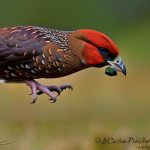
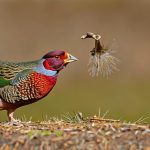
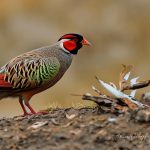
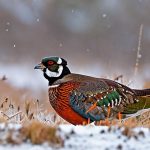
Leave a Reply